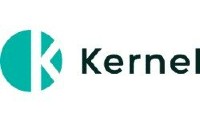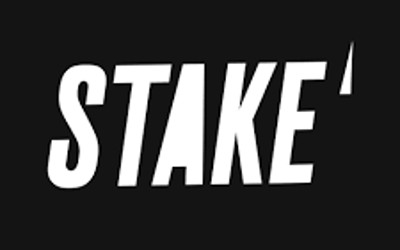How to auto-invest
Auto-investing can help you make small, regular investments, without the effort. We explain the best ways to auto-invest in NZ.

The breakdown
- You can regularly auto-invest in a stock, ETF, or other funds — depending on the platform you choose.
- You can change the frequency and amount of your contributions at any time or stop them altogether.
- Upsides include the benefits of dollar-cost averaging and having to stress less about your investment choices.
Author: Kevin McHugh, Head of Publishing at Banked.
What is auto-investing?

Auto-investing involves regularly investing into a fund, stock, or other assets, without the need to complete the transaction manually. Once an auto-investment is set up, it will continue until you choose to stop it.
A contribution of your choosing is automatically deducted from your account wallet at intervals you set, letting you make regular, steady investments without having to remember to make those transactions yourself each time. As long as you have the money in your wallet, the transaction will take place.
It works a little like KiwiSaver, except that most investing platforms that offer auto-investing give you greater flexibility in terms of choice, frequency and size of the contribution.
However, auto-investing through an investing platform should not be seen as a replacement for KiwiSaver. KiwiSaver has a big advantage in that contributions are matched by your employer (up to a minimum of 3%, but employers can choose to match more) and the government will also match KiwiSaver contributions up to $521.43 per year.
Here’s how auto-investing works
The process of auto-investing is fairly straightforward. Here are the 5 steps involved:
- Pick a platform: Investment platforms vary in fees and choice of investment options, so make sure you assess each against your requirements.
- Select your investment: Not all platforms allow you to auto-invest in any of the assets they have available. For example, while Sharesies has tons of shares, ETFs and funds available, you can only auto-invest in NZ managed funds.
- Choose the amount: Remember to factor in your outgoings and try not to leave yourself short until your next payday. You can always start with a lower amount and ramp up over time, or you can top up with manual contributions.
- Select the frequency: You will have the choice to make automatic contributions on a frequency of your choice, typically weekly, fortnightly, or monthly. This is helpful if you want to align your contributions with when you get paid.
- Keep your wallet topped up: The one part of auto-investing you typically have to manage yourself is topping up the wallet of your investment platform. However, you can also choose to automate this by setting up a direct debit from your bank to your investment platform for the amount and at the frequency you need.
Of course, you’ll want to check in on your portfolio now and then to see how it’s tracking. Remember that investing comes with ups and downs and you won’t always see the value of your portfolio increase.
If you want to minimize risk (and potential reward), look for a more conservative investment. Most investment platforms designate each asset type with a risk value ranging from 1 to 7. The lower the value, the less risk that asset involves.
The best options for auto-investing in New Zealand
Auto-investing is a fairly common feature among trading and investment platforms. However, they all have different fees and available investments so make sure to pick the one that’s right for what you want to achieve.
Sharesies
Taking New Zealand by storm over the past few years, Sharesies has quickly become one of the most popular investment platforms in the country.
With its aesthetically-pleasing interface, no minimum investment, and mission to ‘create the most financially empowered generation’, Sharesies has made it easy for Kiwis to invest, with a massive $1.3 billion invested through the platform so far.
Auto-investment options
Sharesies offers 3 pre-made NZ auto-investments:
- Responsible order: An investment in a selection of funds that aim to be socially and ethically responsible.
- Global order: An investment into both developed markets like the US and Europe, along with emerging markets including India and China.
- Kids order: An investment into medium and high-risk investments. The order is taxed at a child’s prescribed investor rate (PIR), rather than the standard rate.
Sharesies also offers a DIY order that lets investors to mix and match investments from than 40 various New Zealand funds. It’s not possible to auto-invest in individual companies or directly in foreign assets with Sharesies.
Pricing and fees
Sharesies standard trading fees apply to auto-investments:
Transaction fees:
- 0.5% for contributions up to $3,000
- 0.1% for contributions $3,000 and over
Each fund also involves a management fee, although this is charged by the fund manager (Sharesies provides access to funds, but does not manage them). This fee will vary from fund to fund and you must check with the fund manager directly to see what this fee is.
Learn more about Sharesies in our review.
Hatch
As the first platform to offer Kiwis a way to offer fractional shares in US stocks and ETFs online, Hatch has grown significantly in popularity over the last few years.
Auto-investment options
Hatch lets you auto-invest into any of the more than 4,700 US stocks it has available, such as Tesla, Amazon, and Facebook. It’s also possible to direct your contributions to one of the platform’s more than 1,200 exchange-traded funds (ETFs), such as those that look to match the S&P 500.
However, bear in mind that Hatch only offers access to US markets, so you don’t have the option of investing in NZ or AU assets.
Pricing and fees
For transactions of up to 300 shares, Hatch charges a flat US$3 fee. For any shares on top of that amount an additional 1 US cent is added. That means that if you were to auto-invest in 310 shares of a company each month, the transaction (or brokerage) fee would be US$3.10 every month.
Also, because all Hatch assets are on US markets, a currency exchange fee of 0.5% applies to all contributions.
Get all the details on Hatch in our review.
Kernel
Kernel is another investment company that has entered the NZ market in the last few years.
The Kiwi-owned platform focuses on a few specific low-cost index funds. Initially only offering New Zealand funds, Kernel has now grown to provide investment opportunities into more than a dozen different funds.
Auto-investment options
Kernel certainly has fewer options when it comes to auto-investing than its competition, but its 13 index funds do cover both local and international markets.
NZ-focused funds include the NZ 20 (the 20 largest companies on the NZX), the NZ Commercial Property fund, and the NZ Small and Mid Cap Opportunities fund.
International funds include the Global 100 fund (which covers 100 major blue-chip companies), the S&P 500 fund, and the S&P Kensho Electric Vehicle Innovation fund.
Pricing and fees
Kernel doesn’t charge transaction fees for contributions, but there are other fees to factor in.
- Annual management fee: This will either be 0.25% for core funds or 0.45% for thematic funds (such as Kernel’s electric vehicle and clean energy funds.)
- Platform fee: Kernel charges a flat $5 monthly fee for portfolios over $25,000. There is no platform fee for total investments less than that.
Learn more about Kernel on its website.
Stake
Australia-based Stake is another platform that offers Kiwis access to US stock markets. The trading platform stands out in that it doesn’t charge a brokerage fee and it offers a free stock on sign-up.
Stake does not technically have an auto-invest option, although it is possible to set up an automatic direct debit payment from your bank to your Stake wallet. But once the money is in your wallet, you must complete the transaction yourself.
Investment options
With more than 6,000 US stocks and ETFs available, there is no shortage of investment options with Stake. However, like Hatch, the platform does not provide access to Aussie or New Zealand investment options.
Pricing and fees
Unlike many of its competitors, Stake charges zero brokerage fees on transactions — but there is a catch.
As Stake is a US-focused trading app, your NZ dollars must be transferred to US dollars for all trades. And at 1%, its currency exchange fee is around double that of Hatch and Sharesies.
Find out more in our Stake review.
Smartshares
Owned by the NZX Group, Smartshares is an investment management organisation that offers over 35 ETFs. Smartshares offers a regular savings plan, which is their version of auto-investment.
There is a slightly higher bar to entry with Smartshares, as the minimum investment is initially $500 and each following investment must be at least $50.
Auto-investment options
Smartshares provides access to a range of ETFs covering local, Australian and international markets. It also provides NZ and global bond and cash ETFs for investors with lower risk tolerance.
Pricing and fees
Smartshares charges a set-up fee of $30 for new investors, but there are no transaction fees for contributions to your investment.
Smartshares also charges a fund management fee which varies depending on which ETF you choose to invest in but ranges from around 0.20% to almost 1% per year.
Learn more about Smartshares on its website.
The benefits of auto-investing
If you’re still on the fence about whether to auto-invest or not, then here are three key benefits of auto-investing that New Zealand investors to factor into your decision.
Rely on a system, not a habit
Many investors will say that building wealth is all about creating good investing habits. It’s doing the small things right, consistently, day in and day out. And that’s great — if you’re able to forge the habit.
Auto-investing doesn’t rely on your ability to form and persist with new habits. It relies on a system that works regardless of how strong your willpower is at any given time. Once an auto-investment has been set up, your money will begin to work for you, even if you become busy and forget to check your investment portfolio for months.
One brief session of deciding on a stock or fund, setting a contribution frequency and amount, and you’ll be able to reap the exact same rewards as someone with the commitment to invest each month manually.
Benefit from dollar-cost averaging
Part of the stress that comes from investing is choosing the right time to buy shares.
With so much information available about how to time the market and what to look for when investing, it can be overwhelming. Knowing what exactly ‘the right time’ is is effectively impossible to predict.
Auto-investing, however, has the benefit of something called dollar-cost averaging. A tried and true investment principle, dollar-cost averaging involves making regular, consistent purchases, regardless of price.
Over the course of months or years, the average cost paid per share will likely be less when compared to that paid by a regular punter who’s guessing when to time the market.
Maximise returns with small, regular contributions
The traditional approach to investment involves saving up a certain amount of money, then taking that and investing it in a stock or fund.
The trouble with this approach is that cash usually sits in a low-interest bank account until the target amount has been reached. This could lead to missed opportunities.
Auto-investing allows people to regularly invest smaller amounts more frequently, which means they are able to invest as they like earlier and hopefully benefit sooner from that investment.
Auto-investing has its advantages and it can be a good way to get into an investing habit. However, just like any kind of investing, auto-investing involves risk. If you decide it’s right for you, make sure that you understand the risk involved and that you are confident that it suits your investment needs.





